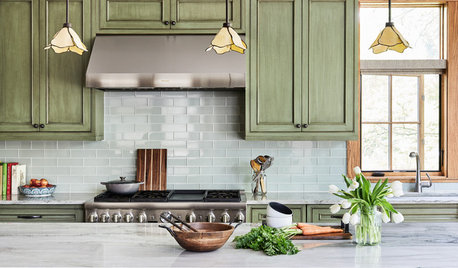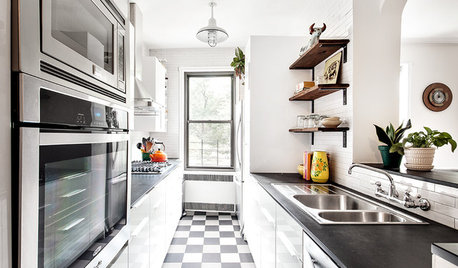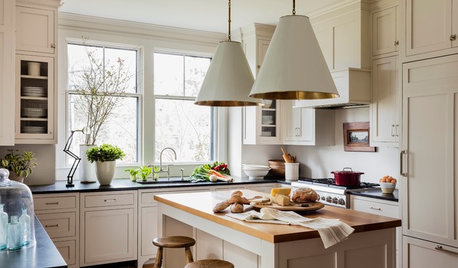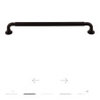I'll preface this by saying I really don't like hoods. But, I need to buy one. We just took out an old downdraft Jenn-Air and need a hood to go over our new all gas 30" Wolf. Honestly, we lived with this system for twenty years, so any configuration I go with will be an improvement. I am not looking for perfection in ventilation.
I've been reading here and get the CFM and MUA aspects and vented vs. non-vented issues. I have questions about brands and mesh filters vs. baffles vs. whatever the Vent-a-Hood type filter is called.
We have size and space and configuration constraints, and to me most hoods are pretty unattractive. We will be going straight up to our 9' ceiling where the venting will have to make a 90 degree turn and then run out between the joists for about five feet before it reaches the outside wall.
My house is from 1916, and my kitchen is designed more to have the look and feel of a 1920s to 1930s kitchen. I want something rather simple in appearance but yet with some style. I have been looking and looking and haven't found many hoods that appeal to me (especially at a price I want to pay). The Bertazzoni Heritage looks kind of interesting. http://us.bertazzoni.com/heritage-series/ventilations/30-canopy-and-base-hood
But, this has mesh filters. So, my first question is about filters. I think I have read here that mesh filters are no good. Am I right? What type of filters should I really be looking for? What is the concensus here about Vent-a Hood with its different type of filters?
My next question is about manufacturers. Who should I seriously be looking at?
And, is there any place Modernaire sells mistakes or returned orders like Rangecraft does?
I'd appreciate some information from the deep knowledge bank here.











ginny20
kaseki
Related Professionals
Ojus Kitchen & Bathroom Designers · Owasso Kitchen & Bathroom Designers · West Virginia Kitchen & Bathroom Designers · South Barrington Kitchen & Bathroom Designers · Minnetonka Mills Kitchen & Bathroom Remodelers · Eagle Kitchen & Bathroom Remodelers · Emeryville Kitchen & Bathroom Remodelers · Port Orange Kitchen & Bathroom Remodelers · Vancouver Kitchen & Bathroom Remodelers · Weymouth Kitchen & Bathroom Remodelers · East Saint Louis Cabinets & Cabinetry · Middletown Cabinets & Cabinetry · North Bay Shore Cabinets & Cabinetry · Bellwood Cabinets & Cabinetry · Boise PlumbersjuliesteOriginal Author
djg1
sjerin
juliesteOriginal Author
kaseki
juliesteOriginal Author
doug_gb
sjerin